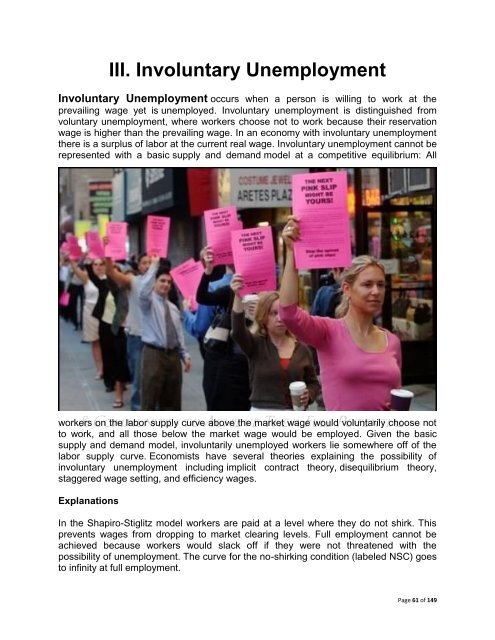Hidden Unemployment
Hidden Unemployment
Hidden Unemployment
Create successful ePaper yourself
Turn your PDF publications into a flip-book with our unique Google optimized e-Paper software.
III. Involuntary <strong>Unemployment</strong><br />
Involuntary <strong>Unemployment</strong> occurs when a person is willing to work at the<br />
prevailing wage yet is unemployed. Involuntary unemployment is distinguished from<br />
voluntary unemployment, where workers choose not to work because their reservation<br />
wage is higher than the prevailing wage. In an economy with involuntary unemployment<br />
there is a surplus of labor at the current real wage. Involuntary unemployment cannot be<br />
represented with a basic supply and demand model at a competitive equilibrium: All<br />
workers on the labor supply curve above the market wage would voluntarily choose not<br />
to work, and all those below the market wage would be employed. Given the basic<br />
supply and demand model, involuntarily unemployed workers lie somewhere off of the<br />
labor supply curve. Economists have several theories explaining the possibility of<br />
involuntary unemployment including implicit contract theory, disequilibrium theory,<br />
staggered wage setting, and efficiency wages.<br />
Explanations<br />
In the Shapiro-Stiglitz model workers are paid at a level where they do not shirk. This<br />
prevents wages from dropping to market clearing levels. Full employment cannot be<br />
achieved because workers would slack off if they were not threatened with the<br />
possibility of unemployment. The curve for the no-shirking condition (labeled NSC) goes<br />
to infinity at full employment.<br />
Page 61 of 149

















